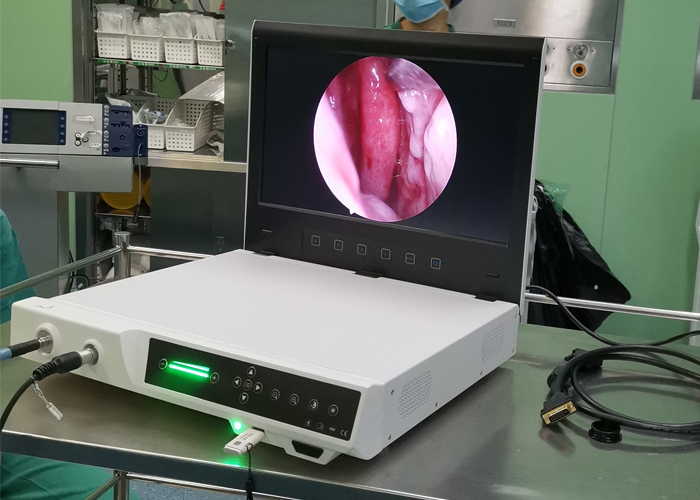The nasal endoscope system is equipped with a cold light source, an endoscope camera and a medical monitor, etc., which can penetrate deep into the nasal cavity, so that all pathological changes hidden in the nasal cavity can be clearly displayed. Its brightness is equivalent to 20 times that of a shadowless lamp, 3.5 mm The small holes can magnify the diseased tissue 500 times, the whole process has a clear vision, at a glance, so that the operation can achieve a more refined effect, and can reach areas that were not easy to reach before.
Adenoidectomy under nasal endoscopy
Surgical methods:
The patient was placed in a supine head position, and intratracheal intubation was used for intravenous combined anesthesia. Open the mouth organ to expose the pharyngeal cavity, remove the bilateral tonsils according to the conventional method, and stop the bleeding. cut). A thin urinary catheter is inserted from one side of the nasal cavity, the front end is pulled out of the mouth, and the two ends are knotted to pull up the soft palate. Insert a nasal endoscope with a diameter of 70° or 30° through the oral cavity or the other side of the nasal cavity to observe the structure of the nasopharyngeal cavity. At this time, the morphology of the adenoids and the eustachian tube pharyngeal opening and round pillow can be clearly observed. With one hand-held mirror and the other hand-held adenoid curette, place the adenoid curette on the surface of the hypertrophic adenoid under the direct view of the medical monitor, and cut it off. Use right-angle forceps to clamp the yarn ball and place it in the nasopharynx to stop bleeding. Take out the yarn ball and insert the nasal endoscope again. At this time, the surgical wound and surrounding conditions of the posterior wall of the nasopharynx can be clearly seen. If there is still adenoid tissue in the surrounding area, it can be scraped off again under the direct vision of the endoscope until the operation is satisfied and the bleeding is stopped.
Advantages of adenoidectomy under nasal endoscopy:
1) The operation changes from blindness to clear vision, which is easy to master, and can completely remove hypertrophic adenoids without damaging other structures of the nasopharynx, thus avoiding some postoperative complications;
2) Surgery under direct vision with nasal endoscope can stop bleeding completely, avoid postoperative bleeding and possible suffocation and other dangers;
3) It is conducive to surgical teaching and observation, and is convenient for video and data storage.
Attention should be paid to adenoidectomy under nasal endoscopy: if the nasal cavity is narrow, the endoscope cannot pass, such as forcible insertion, it is easy to damage the nasal mucosa and cause postoperative adhesions. Therefore, if the nasal cavity is wide or with the aid of a vasoconstrictor, the nasal endoscope can pass the nasal cavity smoothly, the transnasal method can be used.
